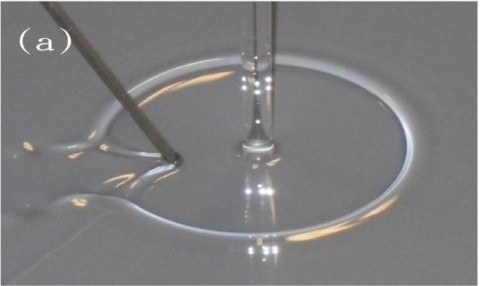How to Make a White Hole in Your Kitchen Sink
October 18, 2010 | Source: Wired Science
Scientists have shown experimentally that liquid flowing from a tap embodies the same physics as the time-reversed equivalent of black holes.
When a stream of tap water hits the flat surface of the sink, it spreads out into a thin disc bounded by a raised lip, called the hydraulic jump. Recently, physicists have suggested that, if the water waves inside the disc move faster than the waves outside, the jump could serve as an analogue of an event horizon. Water can approach the ring from outside, but it can’t get in.
“The jump would therefore constitute a one-directional membrane or white hole,” wrote physicist Gil Jannes and Germain Rousseaux of the University of Nice Sophia Antipolis in France and colleagues in a study on ArXiv Oct. 8. “Surface waves outside the jump cannot penetrate in the inner region; they are trapped outside in precisely the same sense as light is trapped inside a black hole.”
